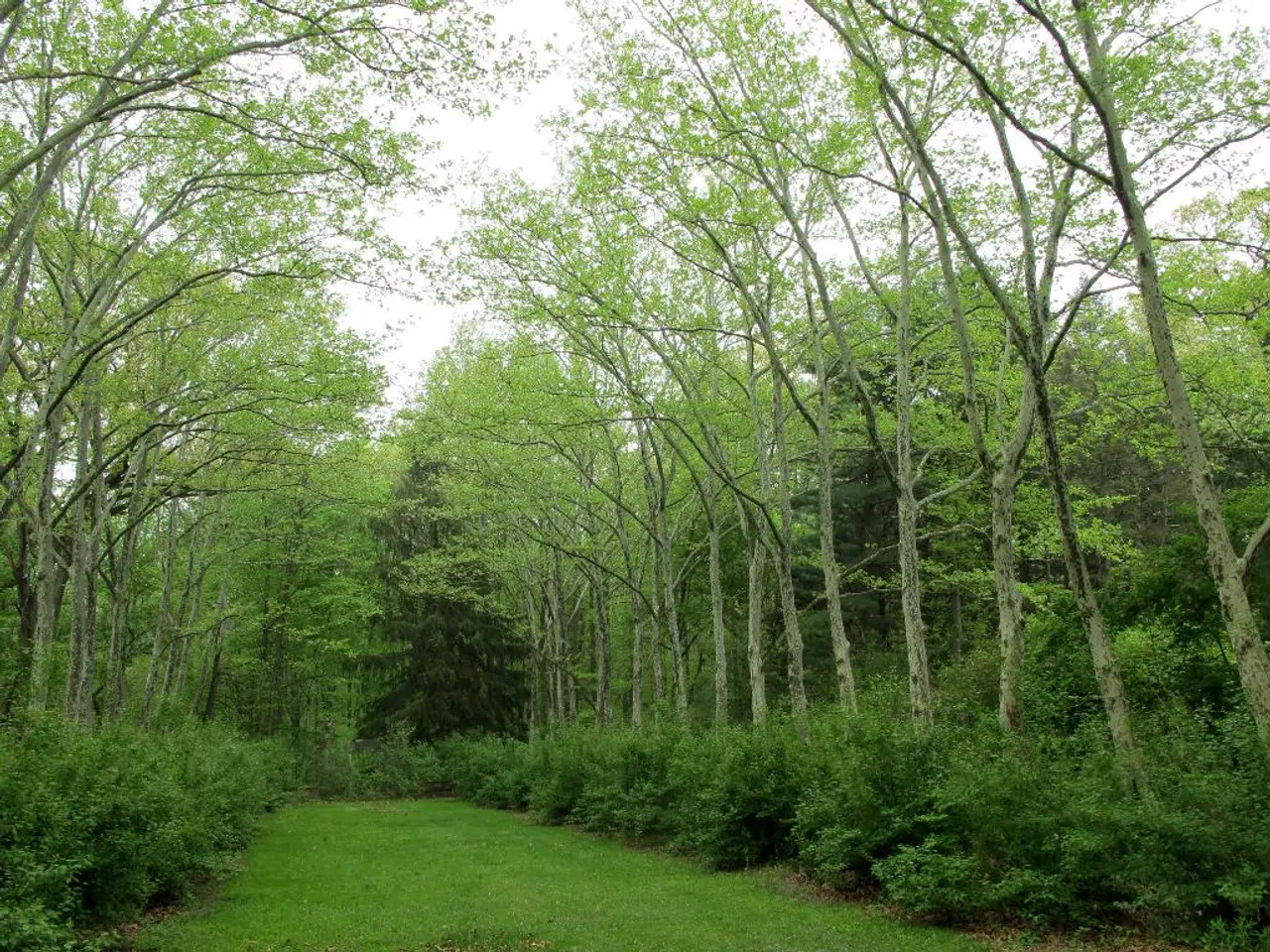Wildlife professionals advocate against summer garden trimming due to its perceived negative impact on natural ecosystems, stating that a messy garden is more beneficial for wildlife.
In the realm of gardening, a new trend is emerging that strikes a harmonious balance between aesthetics and ecology. Wildlife-friendly gardens, far from being wild and unruly, can coexist harmoniously with intentional and cared-for spaces.
Luke Newnes, a new build gardening specialist, advocates for a 'wild corner' or allowing certain borders to grow out, while keeping the rest of the garden neat and well-maintained. This approach allows for a more laid-back, natural garden that can still look stunning.
Leaving garden growth uncut during summer is beneficial for local wildlife. It allows plants to flower fully, providing essential pollen and nectar that attract and support pollinators like bees, butterflies, and other insects. This, in turn, supports a broader ecosystem including birds and other wildlife that depend on these insects for food.
Letting plants grow tall and remain uncut enables native wildflowers and plants to complete their life cycle and produce seeds. It creates habitat and food sources for native insects, especially specialist pollinators dependent on native species. It supports keystone plants such as oaks, asters, and goldenrods, which sustain many caterpillar species and bees fundamental to ecosystem health.
Moreover, this uncut growth adds structural diversity to the garden, offering shelter and nesting sites for wildlife. It provides late-season resources which are crucial as some pollinators and animals rely on summer and early autumn blooms to prepare for winter.
While some gardeners prune perennials for aesthetics or to encourage further blooming, leaving growth uncut enhances wildlife value by preserving flowers and seed heads that wildlife need. However, some dead foliage can provide winter insulation for plants and shelter for insects through colder months, though there is a risk it might attract some pests or diseases.
In summary, uncut summer growth creates vital habitat, food, and shelter resources, promoting biodiversity and sustaining local ecosystems effectively.
On the other hand, cutting back a diseased plant reduces the spread of fungal diseases. A light prune is a better option if you aim to keep your garden looking tidy. Shrubs that flower in the spring, like deutzia, flowering quince, forsythia, philadelphus, and lilac, benefit from summer pruning. Trees from the Prunus family, like plums, cherries, damson, as well as apple and pear trees trained as espaliers or cordons, also benefit from summer pruning.
Flora Beverley, founder of Pollinator Pathways, suggests leaving leaves on the ground to mulch down and provide nutrients and shelter. Wildlife experts are urging gardeners to avoid cutting their gardens back in summer to help local ecosystems flourish.
Planting wildflowers like common Poppy, Wild Carrot, Corn Marigold, and Red Clover can make your garden hospitable for wildlife. Allowing a bit of natural overgrowth maintains plant vitality and creates valuable habitat for local wildlife.
A pond can attract insects, pollinators, toads, frogs, birds, and hedgehogs to your garden. Not cutting back your garden will not necessarily leave it looking 'messy'.
In conclusion, by adopting a wildlife-friendly approach to gardening, we can create beautiful, thriving spaces that support local biodiversity and ecosystem health.
Incorporating a 'wild corner' or allowing certain areas to grow out, as Luke Newnes suggests, contributes to a more lifestyle-oriented home-and-garden that harmoniously blends aesthetics and ecology, offering support for local wildlife. Leaving garden growth uncut during summer nourishes pollinators and fosters a diverse ecosystem by providing essential resources like food, shelter, and habitat for wildlife, thereby promoting biodiversity in the home-and-garden landscape.




